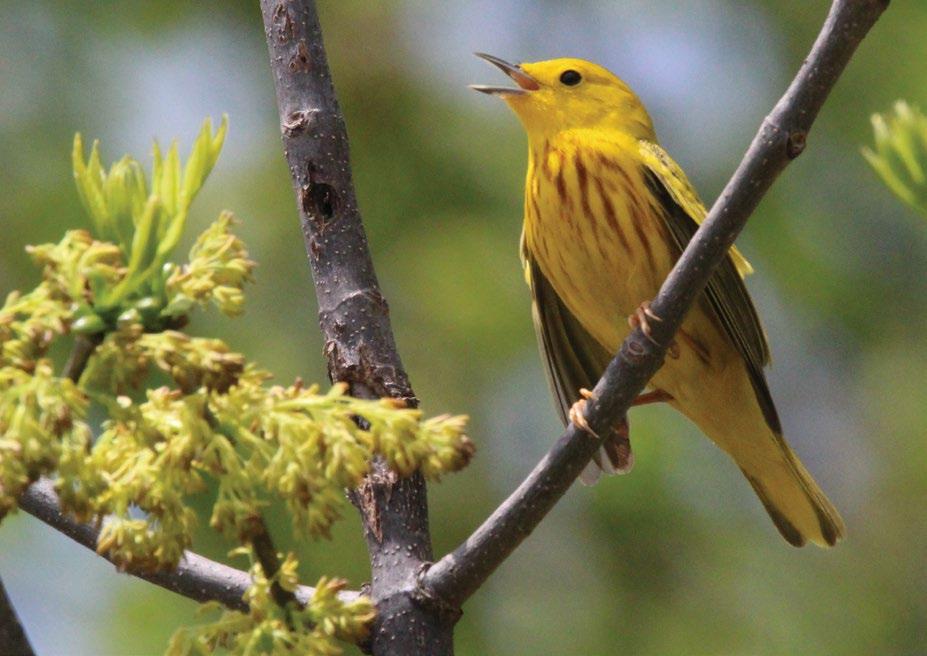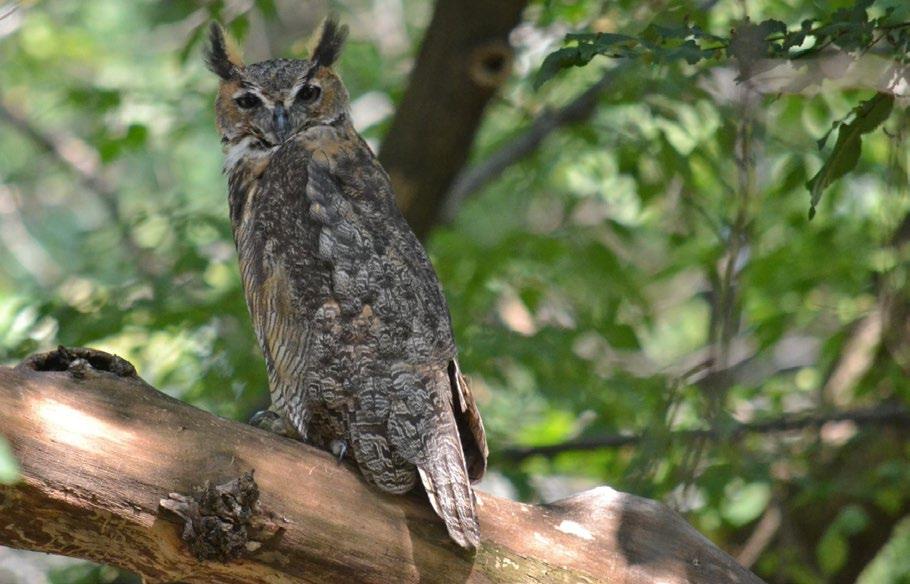
2 minute read
It's In Our Nature
INFORMATION CENTERED AROUND OBSERVING AND LEARNING ABOUT ALL ASPECTS OF NATURE
MIGRATORY BIRDS SPOTLIGHT: WaRbLeRs
The magic of songbird spring migration is in full swing. Each spring, many songbirds, especially the warblers, are journeying from their winter homes in the southern US, Mexico, and South America to summer nesting grounds. Like the Yellow Warbler (Setophaga petechia) and Prothonotary Warbler (Protonotaria citrea), some warblers find nesting habitat here in Lorain County, while others stop only to refuel before crossing Lake Erie to the boreal forests of Canada.
The Blackpoll Warbler (Setophaga striata), with its black cap and white cheek, covers over 12,000 miles during their migrations in the spring and fall each year. Their northern migration route will take them from the Amazon River basin to the boreal forests of Canada. On their southern migration route in the fall, these amazing birds will fly from Canada to the Carolina coast, where they will refuel for their three-day non-stop flight over the Atlantic Ocean to Peru and Brazil, an astonishing almost 2000 miles!
The Blackburnian Warbler (Setophaga fusca) will undoubtedly catch your eye with its unique flaming orange throat patch. Sightings of this bird are rare as it prefers to glean insects from the leaves at the top of the forest canopy. Their spring migration journey takes them from the forests around the Andes Mountains in South America up to Canada’s boreal forests.
The Cerulean Warbler (Setophaga cerulea) is unmistakable with its brilliant sky-blue feathers. If you listen closely for its buzzy trill of a song, you might hear this beautiful warbler before you can see him.
We invite you to join a hike as we listen and watch for these amazing, beautiful migrating songbirds – the warblers!
NocTuRNaL HapPY HouR
Most of us think of the dark hours as a quiet time to wind down and rest. However, many animals are awake only at night. Nocturnal animals use the shelter of the dark to remain hidden while they hunt for food or hide from predators. With owls, flying squirrels, bats, and more—it can be a busy place outdoors at night! Many animals have developed unique adaptations to help them navigate nocturnally. Owls have specialized eyes to see ell in the dark, seeing mostly in grayscale. Most owl species have goldcolored eyes, to help reflect any available light from the moon to help them see. A great-horned owl's eyes take up about half the room in their skull. On a human, those eyes proportionally would be the size of softballs! Bats use their ears to see in the dark. Bats use echolocation, in which they emit a high-pitched sound to bounce off objects and identify the object's shape, direction, and distance. This ability helps them navigate the air without seeing and catch insects midflight.

While nocturnal animals are mostly active at night, there are a host of reasons they can be seen out and about during the day. Seeing a nocturnal animal during the day does not mean it is sick or injured. It is most likely hunting overtime to provide food for its growing family or has been flushed from a daytime hiding spot. If you come across an animal during the day, be sure to observe from a safe distance.



